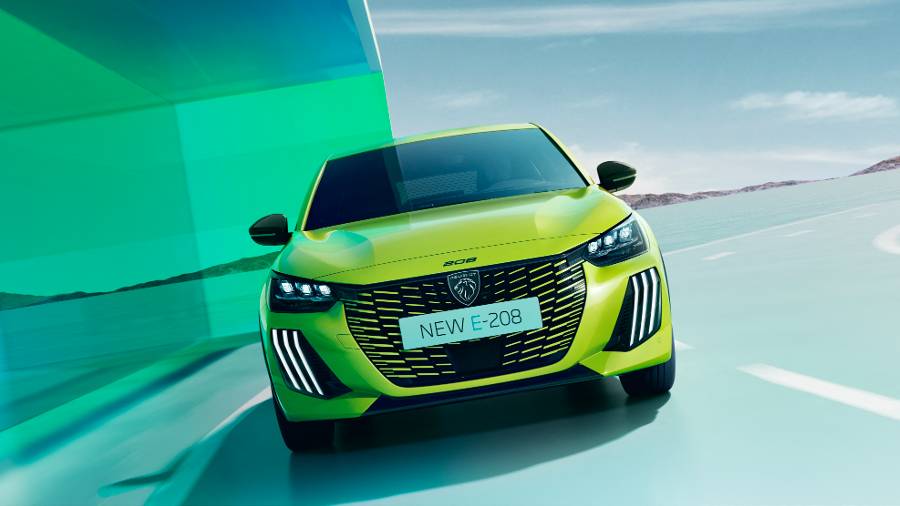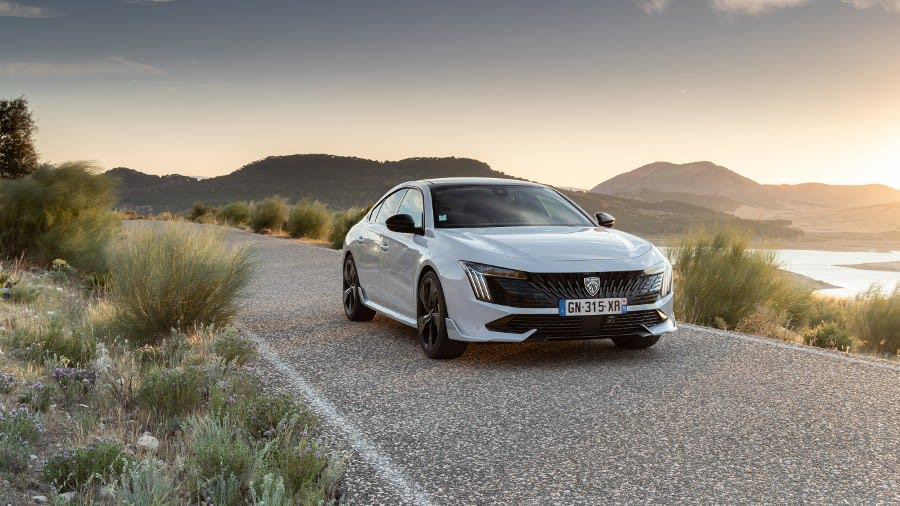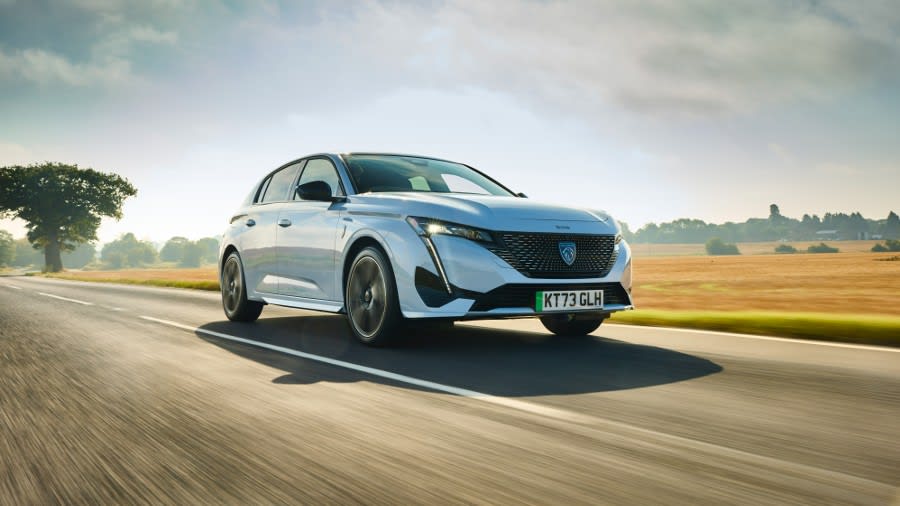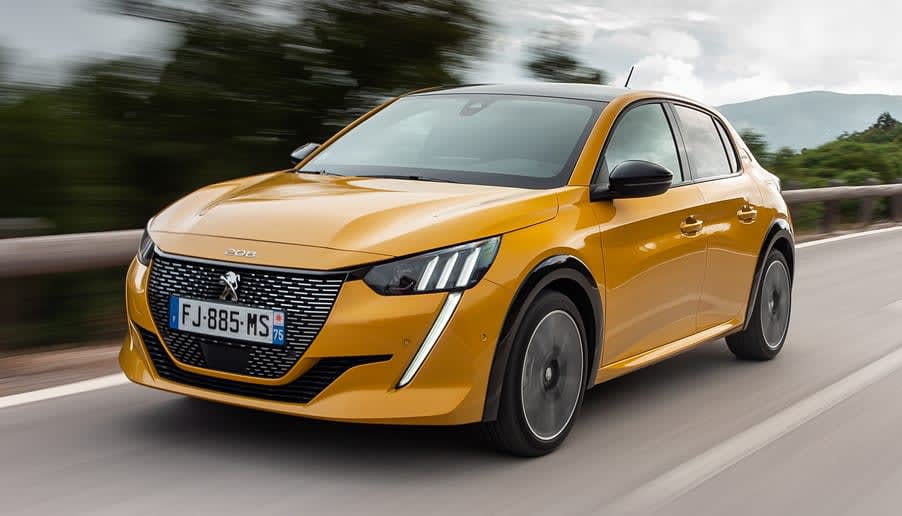
Peugeot 208 Review

Introduction
Yep, that’s not a typo. It really did win Car of The Year last year. A Peugeot. But those who remember the poor build quality of yesteryear will be pleasantly surprised by what they find today.
Over the years, the Peugeot supermini has been getting better and better looking. Long gone is the dated 206 bubble car that was loathed by many and, step by step, Peugeot has overseen its evolution into something that’s looked funkier and funkier each time, until it almost resembles a hot-hatch today.
Review Sections
Select's rating score* - 3.8 / 5
At a Glance
Make no mistake; it isn't a hot-hatch. But the 208 certainly oozes coolness. It’s better looking, better proportioned and has aggressive styling lines, with a mean grille and two streaking vertical lights at the front, which look like they’ve been inspired by a sabre-toothed tiger.
We were baffled as to why the fuel filler cap is so enormous. Apparently, it's been designed to accommodate the larger plug found on the all-electric e208, and, evidently, Peugeot has decided to use the same panels across the range to cut costs.
The 208 is lighter than the old model, and if you look underneath the car, you'll see Peugeot has introduced a flatter floor. This floor design reduces wind noise in the cabin and improves the vehicle’s aerodynamic performance by cutting drag.
Key Features
The trims have recently been revised on the 208, and there are now five to choose from.
At entry-level, there’s the Active Premium trim, which provides manually-adjusted air conditioning, a seven-inch infotainment system with Android Auto/Apple CarPlay, 16-inch alloy wheels, front LED daytime running lights and rear parking sensors.
Next up is Allure, which adds an electric parking brake, full LED lighting at the rear, automatic air conditioning, a gloss black finish on the rear bumper and the Visibility Pack with automatic windscreen wipers.
Allure Premium goes further still, replacing the analogue dials on the dashboard with a digital instrument display known as “3D i-Cockpit”, a reversing camera, four USB sockets (two in the front, two in the back) and a half-leather effect on the seats.
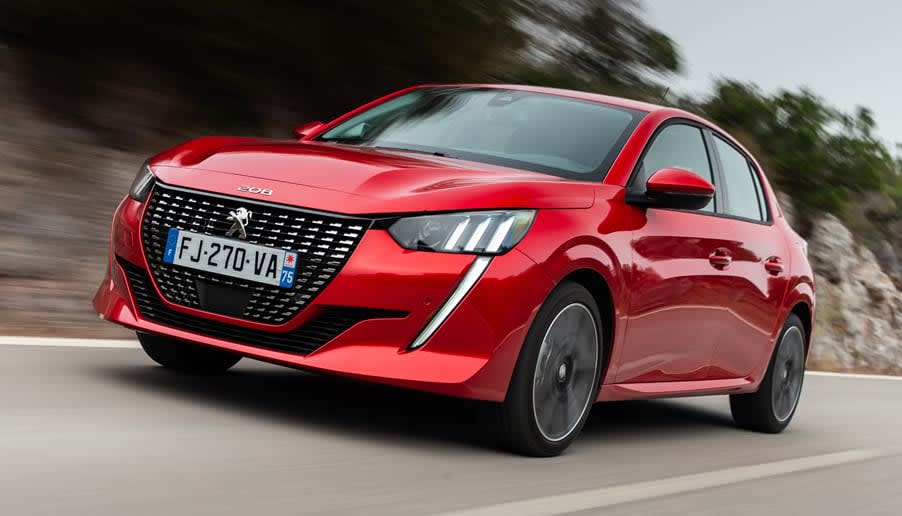
The GT model adds in full LED headlights with Smartbeam assist, larger 17-inch alloys and a bigger 10-inch touchscreen with SatNav thrown in, along with ambient lighting and blind-spot monitoring. Front parking sensors are included in the GT, too, adding to the rear ones provided as standard across the range. You also get GT badging and styling.
Finally, at the top of the range, it’s the GT Premium, which adds keyless entry, adaptive cruise control, lane positioning assist, and heated front seats.
The 208 comes with a choice of yellow, white, pearlescent white, light grey, dark grey, black, blue and red, although not all colours are available on all trims.
As for power, there are plenty of options. The petrol engined-version – called Puretech – is a 1.2-litre three-cylinder, and there’s 74hp, 100hp and 129hp variants. The diesel – called BlueHDi – is a 1.5-litre four-cylinder, producing 100hp, and this one is only available with a manual. And there's the all-electric e208, which beats all the above with 136hp. Of course, as with any electric car, that also means there's no gear shifting to be done.
Confusingly, however, which engines are available and whether they come with a five-speed or six-speed manual, or an eight-speed automatic, seems to change depending on which trim you select. It’s rather needless and seemingly random. Therefore, there are far too many combinations to list here, but it’s worth bearing in mind when you come to lease, especially if you have an engine or gearbox preference in mind.
Our test car is the range-topping GT Premium trim with the 129hp engine, which means we’re testing the automatic gearbox as it isn’t available with the manual. However, we've driven a manual version, too, and can report that the 208 is perfectly acceptable with a lightweight clutch pedal.
Performance & Drive
Admittedly, Peugeots have never been fantastic to drive, but the 208 is impressive in many ways.
Even with our larger 17-inch wheels, the suspension feels soft and deals with lumps and bumps in the road well, and the automatic gearbox feels reasonably responsive.
The ride comfort is good, then, and the cabin certainly seems quieter than we expected. Even when you push the engine, it accelerates well without the power unit screaming at you. While old Peugeots would be puffing smoke out of their earholes on motorway journeys, the 208 doesn’t even break a sweat at 70mph.
The soft suspension won’t be to the tastes of performance enthusiasts, though, as it creates quite a bit of roll in the bends. And if you're travelling along rough ground, it does get a bit wobbly. In addition, the steering doesn't feel particularly precise, meaning you’re likely to go around corners with that little bit of extra caution. If anything, though, the car tends to understeer.
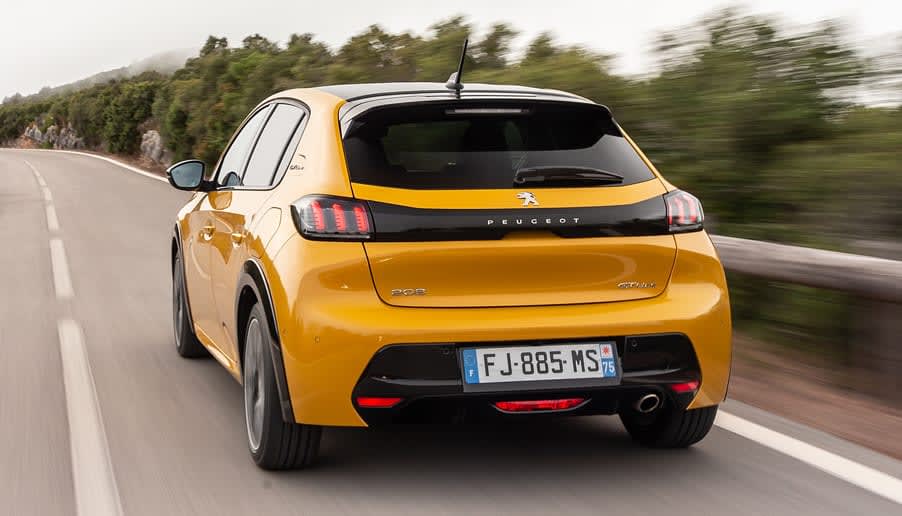
It may have a sporty appearance, but it certainly isn’t sporty to drive – although this means those who prioritise comfort over handling will be in for a treat.
There is a trio of driving modes – Eco, Normal and Sport. Eco prioritises fuel economy, while Sport mode increases power delivery, with Normal somewhere in between.
The 129hp engine in our test model is strong and pulls very well. So, it will undoubtedly be the engine of choice for those who want more performance. But, given the car's handling isn't aimed in that direction, we reckon you'll be okay with the 100hp unit, which is very good in itself, and will still tick all the boxes for most drivers.
When putting your foot down, there’s a short delay before the automatic gearbox changes down. It accelerates impressively but, with eight speeds, it does mean it has a tendency for the gear changes to feel like they’re dominating stop-start journeys between sets of traffic lights on the commute to work. Mind you; if you're constantly changing gear, then this is still preferable to a manual.
Overall, the driving experience is good but, while the 208 may well have the looks to leave a Fiesta in the shade, the Ford is arguably more refined on the road.
Nevertheless, this is a very creditable effort from Peugeot and a vast improvement on the old 208.
This is hardly a vehicle designed to be taken to its limits, but it’s a good all-rounder. It handles motorway cruises with ease, provides a comfortable ride and is perfectly driveable at low speeds around town. It really ticks all the boxes and does everything you need it to.
Running Costs & Emissions
The 208 has been a lovely surprise so far, and it's no different when it comes to the fuel consumption figures. Even the least economical 129hp petrol engine still manages up to 51.9mpg.
Although we have no hesitation in recommending the 129hp petrol, especially given its impressive fuel consumption, the mid-range 100hp is also very good and will suffice for most. But then, that’s the same power as the diesel, so if you’re driving longer distances, you might want to get the calculator out to see if the savings in fuel costs will outweigh the higher asking price of the diesel version.
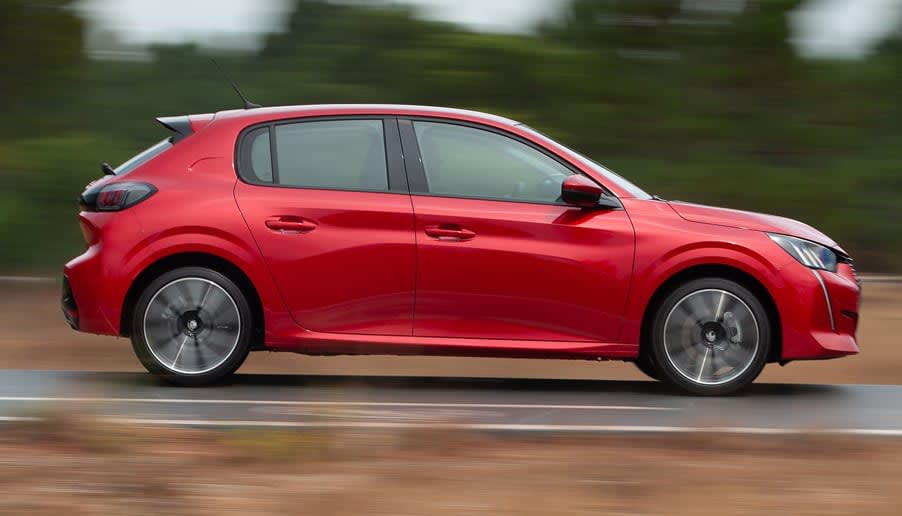
The 208 has low CO2 emissions, too, ranging from 107g/km on the diesel up to 124g/km on the 100hp petrol with the eight-speed automatic. Interestingly, the 129hp engine actually performs very slightly better at 122g/km.
The car comes with a standard three-year or 100,000-mile warranty for peace of mind should you encounter any issues. But, if Peugeot has improved its reliability as much as its improved every other aspect of its car, then you should be fine.
Servicing costs are reasonable, although Peugeot does tend to charge slightly higher than average.
Interior & Technology
It's not just the exterior that Peugeot has worked hard on. The interior is a very nice place to be, too.
It looks futuristic, with a two-step dashboard making it more attractive than its rivals, and it has plenty of character. Soft-touch materials also give it a premium feel, minimising the cheap plastics.
The digital instrument display – which is standard on all but the entry-level model – is excellent, has different layouts and provides just about every bit of information you could ask for. The infotainment system is a walk in the park to use, too. Below it, there are touch-sensitive shortcut buttons to get you to specific menus instantly.

There is a lack of physical buttons, though, which makes adjusting basic things like the air conditioning temperature a bit more complicated than it needs to be.
The infotainment screen has a lower resolution than some of its rivals, though, and the system itself, while not bad, isn’t the best we’ve seen. But, with Apple CarPlay and Android Auto offered on all models, you can more or less skip the lot and use the interface that's compatible with your phone.
The steering wheel is an odd shape. It's still round but with a flattened top and bottom, which reduces its size. It is pretty cool, but it does mean from certain positions, smaller drivers may struggle to see the digital instrument display, which is designed to be viewed over the top of the wheel rather than through it.
Practicality & Boot Space
In the front, it has two cupholders, with storage space in the centre console. The door bins are fairly capacious, and that's good because the less said about the glovebox, the better. To be honest, there's so little usable space in there that Peugeot might as well not have bothered with it.
In the back, the seats are comfortable, but taller passengers won’t appreciate it as they’ll more than likely have a sore neck thanks to the roofline, which slopes down towards the back window.
Getting three adults of any size in the rear is going to be near impossible on longer journeys, and if you only have two-up back there, there’s no rear armrest to pull out from the middle seat. Don’t expect any consolation by being able to rest your arm on the back door, as the windows don't go all the way down, either. This is probably because the doors are too small to allow this.

The boot has a perfectly acceptable 311-litres, which is bigger than the Ford Fiesta’s 292-litres. But both are beaten by the humble Volkswagen Polo, which has 355-litres, while the Renault Clio holds the trump card with 391-litres.
The boot space expands to 1,106-litres without the rear seats, which fold down in a 60/40 configuration. This beats the Clio's 1,069-litres and the Fiesta’s 1,093-litres, but surprisingly the little Polo wins this one with 1,125-litres.
There is quite a tall boot lip which makes lifting heavier things out of the car a tad awkward.
Nevertheless, unless you’re planning on taking the kitchen sink with you, the boot space of the 208 should be sufficient for all but the heftiest of tasks.
Safety
The 208 was tested back in 2019 and scored a four-star EuroNCAP safety rating.
While similarly-sized cars have achieved five-stars, it's worth noting that the 208 still competes well for those inside the car, scoring 91% for adult occupants and 86% for children. It also scored 71% for safety assists.
Although helpful, there's also a reversing camera with a resolution akin to a home camcorder from the mid-1990s. It's flawed, but, as reversing goes, anything is better than nothing.
All cars have rear parking sensors, too, so that will provide an audio guide to avoiding crashing into anything, even if you find yourself squinting when it comes to the screen’s visual guide.
The Active Safety Brake System will brake for you if it spots a hazard, while lane keep assist will ensure you don’t veer into another vehicle on the motorway.
Options
There is quite an extensive options list for the 208, which is disappointing as the standard asking price is already higher than its rivals, albeit Peugeot would argue its vastly improved quality justifies this.
In addition, not all options are available on all models, which, if you've tried to compare trims with engines and gearboxes, is already an all-too-familiar frustration.
SatNav is standard on the GT and GT Premium but an optional extra on all other models.
The Drive Assist Pack, which includes the adaptive cruise control, is only included as standard in the GT Premium – and it’s only available as an optional extra on the Allure Premium and GT trims.
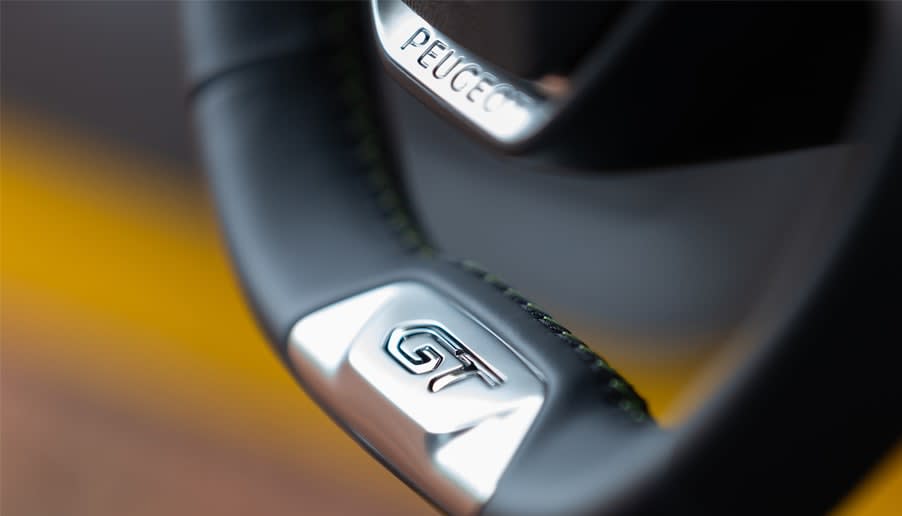
Additionally, GT and GT Premium models can have semi-automated parking assistance as an optional extra, which controls steering and acceleration when parallel parking.
Lumbar support is offered as an option – but only on the GT and GT Premium version, and it’s not offered on any trim of the electric version for some reason. What’s even more annoying is that it's only available as part of a package that includes leather seats, so it’s not cheap. You will get massage seats in the front if you choose it, though, so every cloud has a silver lining.
You get the idea - it goes on like this.
In fact, this is one of the most difficult-to-fathom cars we’ve come across when it comes to understanding combinations of standard features, optional extras, trims, engines and gearboxes, so you must do your research.
If we’ve one criticism of Peugeot, the automaker could easily make this a lot less complicated, and it would be good not to require a PhD in philosophy to be able to get your head around it.
Thank goodness you can scream your frustrations at the sky thanks to the optional panoramic sunroof. Oh… that’s only available in the GT and GT Premium, too.
Rival Cars
As we’ve covered, other cars you might want to consider are the Ford Fiesta, the Volkswagen Polo and the Renault Clio.
All have their plus points, and arguably all have at least one area where they’re stronger than the Peugeot (possibly a less complicated combination of trims, engines, gearboxes and options), but none can match the 208’s sheer driving comfort.
A Mini and an Audi A1 are also worth checking out, as they are similarly priced – although we seriously think the 208 gives both a run for their money.
The Seat Ibiza is another contender worth adding to your shortlist, too.
Verdict & Next Steps
Overall, we’re blown away by the Peugeot 208’s quality.
Once you’ve got your PhD – and selected from the countless combinations of gearbox, engine, trim and options – then you've got the tricky bit out of the way, and you're on to a winner.
When that's done and dusted, you can be driving around in a real head-turner, basking in the vast gulf between it and the old 208 – and the even more immense gulf to its predecessors, the 207 and 206.
We very much doubt that the 208 is the best car out there, but this is such a massive leap forward for Peugeot in every sense, from exterior design and interior quality to driveability and ride comfort. In that respect, its Car of The Year 2020 award should come as no surprise. On the contrary, it's perfectly understandable – and arguably justified.
But please, Peugeot, just make deciding what to have a bit less complicated if you plan on making a 209.

